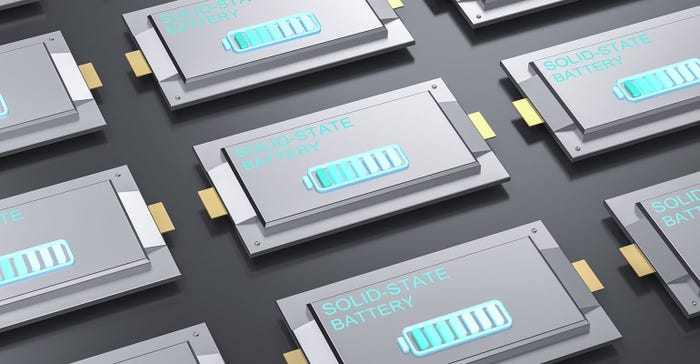Argonne: Heed the Warning of the Ghost in the Battery
Argonne researchers complete an in-depth examination of soft-shorts, a ghostlike phenomenon that is an early step toward permanent failure in a battery.

Researchers at the US Department of Energy’s Argonne National Laboratory have made significant strides in understanding early signs of battery failure, particularly focusing on a phenomenon called 'soft-shorts.' Their study provides crucial insights into the challenges associated with lithium metal anodes in solid-state batteries and offers methods and tools for designing superior electric vehicle (EV) batteries.
Navigating Li-metal challenges in SSBs
The Argonne team's research centered on solid-state batteries with lithium metal anodes, often considered the "holy grail" of battery technologies due to their potential to revolutionize electric vehicles (EVs) with longer driving ranges. While lithium metal can store a large amount of charge in a compact space, it poses operational challenges, particularly in traditional batteries where it can react adversely with liquid electrolytes.
In a normally functioning battery, during discharging, ions flow from the anode through the electrolyte to the cathode, while electrons flow to an external device, powering it. However, the use of lithium metal can disrupt this process. During charging, lithium filaments can grow off the anode and penetrate the electrolyte, potentially creating a permanent "wire" between the electrodes, causing an internal short-circuit and leading to battery failure.
To address these challenges, the Argonne team sought to incorporate lithium metal anodes into solid-state batteries, leveraging solid electrolytes to mitigate filament-related issues while retaining the benefits of lithium's high charge storage.
Soft-shorts: dynamic ‘ghosts’ leading to battery failure
While developing a new solid electrolyte for EV batteries, the Argonne team observed an unexpected behavior – small, brief voltage fluctuations in their batteries. Further investigation revealed the presence of 'soft-shorts,' tiny, temporary short-circuits where lithium filaments grow from the anode to the cathode. Unlike permanent short-circuits, soft-shorts allow some electrons to flow to external devices, and ion flow between the electrodes might continue.
Soft-shorts exhibit dynamic behavior, forming, disappearing, and reforming in microseconds or milliseconds.

3D rendering group of solid-state batteries. Credit: PHONLAMAIPHOTO/ISTOCK/GETTYIMAGESPLUS
“This is an important takeaway for battery researchers,” explained Michael Counihan, an Argonne postdoctoral appointee and the lead researcher on the team. “With typical battery testing in the lab, researchers may only measure voltage every minute or so. During that time, you could have missed the formation and death of thousands of soft-shorts. They’re like little ghosts that are destroying your battery without you knowing it.”
The team found that batteries with soft-shorts can continue operating for hours, days, or even weeks. However, the filaments generally grow in number over time, ultimately leading to battery failure. The dynamic nature of soft-shorts poses a challenge for typical battery testing in labs, where researchers may only measure voltage at intervals, potentially missing the formation and dissolution of thousands of soft-shorts.
The team's further examination revealed that heat plays a crucial role in soft-short dynamics. When electrons flow through the lithium filaments, heat is generated, similar to the heating in household appliance wires. This heat can quickly melt the filaments, especially if the surrounding electrolyte is thermally insulating. Additionally, soft-shorts can dissolve when filaments react with certain electrolytes.
Understanding the impact of soft-shorts on battery performance, the Argonne team developed and demonstrated several new methods for detecting and analyzing the phenomenon. These tools include quantifying how much soft-shorts contribute to a battery's resistance to current flow, offering useful insights for assessing battery health. The team aims to share these findings with the global research community to advance the design of hard solid electrolytes and refine battery materials, ultimately avoiding failure pathways and contributing to the development of safer and more efficient EV batteries.
The team made its solid battery electrolytes at Argonne’s Materials Engineering Research Facility and evaluated the materials at Argonne’s Center for Nanoscale Materials, a DOE Office of Science user facility. Besides Counihan, the study’s other authors were Kanchan Chavan, Pallab Barai, Devon Powers, Yuepeng Zhang, Venkat Srinivasan and Sanja Tepavcevic. The study was funded by the Vehicle Technologies Office of DOE’s Office of Energy Efficiency and Renewable Energy.
About the Author(s)
You May Also Like





